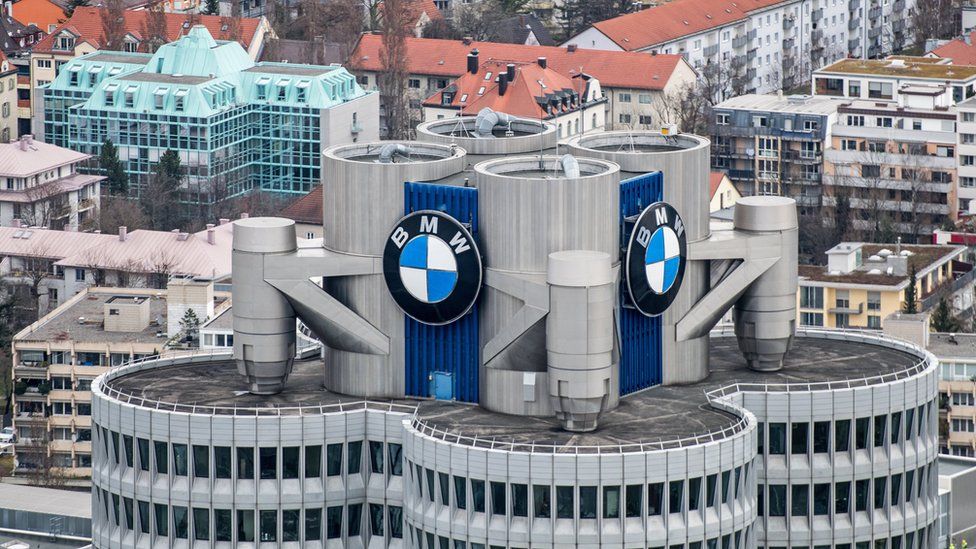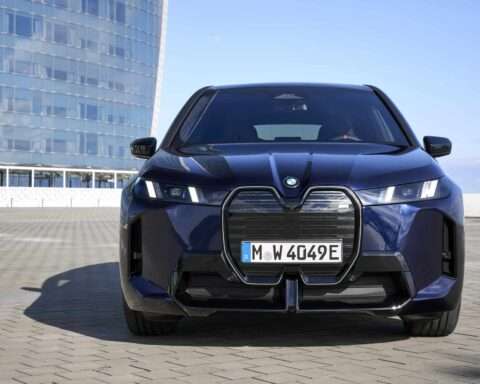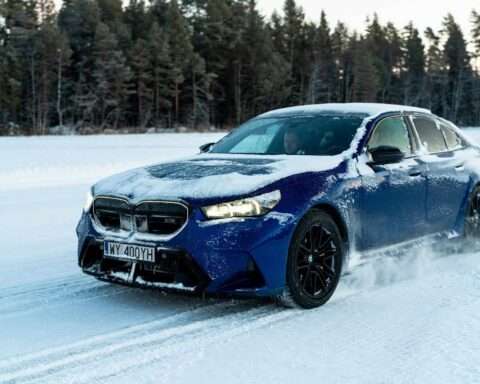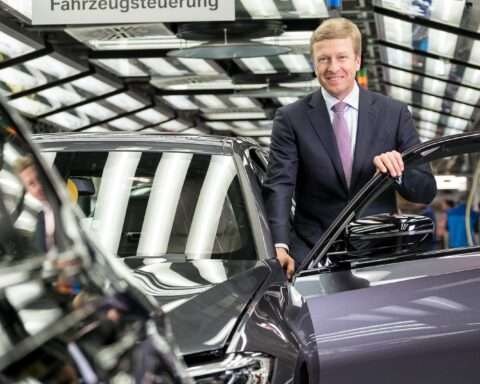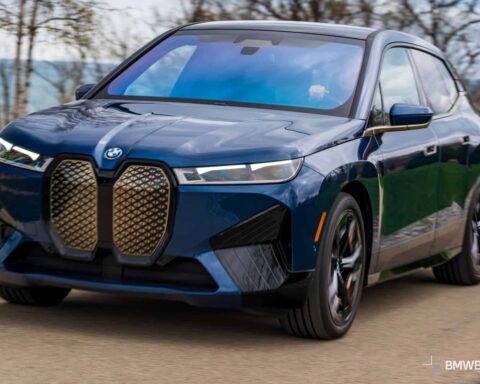Ahead of the IAA, BMW AG Management Board Chairman Oliver Zipse has presented the latest sustainability goals. Looking ahead to the Neue Klasse, the company is further strengthening its self-defined objectives with a firm focus on the circular economy.
Sustainable thinking and action have long been a tradition at the BMW Group, which has always strived to be the most successful and sustainable provider of premium individual mobility. This entails taking responsibility for the environment and society. One of the greatest and most important challenges facing humanity today is effective climate protection.
BMW AG Management Board Chairman Oliver Zipse has now announced new details of the BMW Group’s focus on sustainability. Crucially, the BMW Group is tightening its own CO2 emissions targets and has committed to a course in line with the 1.5°C target for restricting global warming – and therefore with the Paris Agreement. Significantly more use will be made of secondary materials, making the BMW Group a pioneer and pacesetter in the circular economy. This aspiration will also underpin the future Neue Klasse product range.
The targets at a glance:
- More ambitious CO2 targets:
- CO2 emissions per car from the utilisation phase will be at least halved by 2030
- CO2 emissions during the vehicle lifecycle will fall by more than 40 percent by 2030 (including production and upstream supply chain)
- 10 million fully electric vehicles in total will take to the roads within ten years
- Consistent focus on the circular economy:
- The ‘Secondary First’ approach will gradually increase the share of secondary materials used to as much as 50 percent
- The BMW Group has partnered with BASF and the ALBA Group on plastics recycling
- RE:BMW – Visionary outlook on the circular economy at the IAA Mobility
Ambitious goals for effective climate protection.
By 2030, CO2 emissions per car and kilometre driven will fall by at least half compared with 2019, as the utilisation phase of a car accounts for the largest share of CO2 emissions across the vehicle lifecycle – more than 70 percent. Across the lifecycle as a whole, production and the upstream supply chain included, the BMW Group is aiming for CO2 emissions per car to come down by at least 40 percent – an ambitious goal that makes the company the leader among automotive manufacturers.
“How companies are dealing with CO2 emissions has become a major factor when it comes to judging corporate action. The decisive factor in the fight against global warming is how strongly we can improve the carbon footprint of vehicles over their entire life span. This is why we are setting ourselves transparent and ambitious goals for the substantial reduction of CO2 emissions; these are validated by the Science Based Targets Initiative and will deliver an effective and measurable contribution,” said Oliver Zipse.
The Science-Based Targets Initiative (SBTi) is a partnership between the Carbon Disclosure Project (CDP), UN Global Compact, World Resources Institute (WRI) and World Wildlife Fund for Nature (WWF).
By 2050 at the latest, the BMW Group intends to be climate-neutral along the entire value-added chain. This means that the company is also part of the international Race to Zero Initiative. The company is convinced that this can be achieved using innovation, rather than any overall ban on individual technologies.
How we will become climate-neutral.
First: By ramping up electromobility. By 2030, electric vehicles will account for at least half of the BMW Group’s worldwide sales, and at MINI they will make up the entire product portfolio starting early next decade. We aim to put 10 million fully electric cars on the roads within the next ten years.
Second: By rethinking the way we use resources. When it comes to climate protection, what matters is the total actual CO2 emissions, from the raw materials and materials that are used, via the industrial production process and active vehicle utilisation, through to raw material reprocessing. The use of primary materials and the related environmentally harmful exploitation of resources has to be reduced – especially in car manufacturing, as this is one of the most raw material-intensive sectors of all.
“2017 was the first time the world’s population consumed more than 100 billion tons of resources within a single year, a trend which we in the automotive industry must also counteract,” Zipse demanded. “This is a strategic issue, concerning not only ecological but also economical sustainability; the current development of commodity prices demonstrates the impact an industry that is dependent on limited resources must expect.”
‘Secondary First’: The BMW Group as a pioneer of the circular economy.
The number of battery-powered vehicles is increasing – and with it the demand for many commodities, such as the cobalt, nickel and aluminium needed to makehigh-voltage batteries. Reusing these materials has a positive effect on the carbon balance of vehicles, especially in the supply chain. The nickel in the high-voltage battery of the BMW iX is already up to 50 percent secondary, and vehicles currently comprise just under 30 percent recycled and reused materials on average, such as steel, plastics and aluminium. The BMW Group intends to gradually increase this figure to 50 percent with its ‘Secondary First’ approach.
The foundation for the utilisation of secondary materials and the practicable circular economy is laid long before actual production and starts with what the BMW Group calls ‘circular design’. From 2025, the Neue Klasse product generation will revolutionise vehicle architectures by rethinking the car completely. This will entail a focus on the principles of ‘E-mobility First’ and ‘Secondary First’, with digitalisation, electrification and sustainability as key characteristics.
So, what’s so special about circular design? Basically, any material that was once a car should become a car again. So, vehicles must be designed in a way that makes materials easy to separate and reprocess. The on-board network, for example, must be easy to remove so that the steel and copper in the wiring harness remain separate. This will allow secondary steel to maintain its material qualities and meet the rigorous safety standards of our industry. In addition, we must ensure that cars can be dismantled quickly and cost-efficiently so their secondary materials are competitive in the market. And that is what the Neue Klasse intends to deliver from the outset.
To make a comprehensive contribution to the protection of resources, recycling must be economically viable. That’s why the BMW Group is entering cross-sector collaborations with partners from industry and politics. A pilot project with BASF and the ALBA Group, for example, is working on increasing the recycling of automotive plastics. The ALBA Group is assessing how far plastic can be reused ‘car-to-car’, while BASF works on options for chemical recycling. In the future, this could allow an obsolete instrument panel to become a door panel or another component, for example.
RE:BMW at the IAA Mobility – Our vision of the circular economy.
The BMW Group is putting circular economy at the centre of its presence at the IAA Mobility 2021 in Munich, where the company will offer a visionary outlook on the potentials of a circular economy and sustainable mobility. The BMW i Vision Circular shows how individual, luxury and sustainable urban mobility could look in 2040. The vision vehicle consists of 100% secondary and renewable raw materials and is completely recyclable.
It demonstrates that climate protection and individual mobility need not be a contradiction.
It shows that by using new technologies and innovation, the BMW Group can fulfill the planet’s requirements for greater sustainability.


